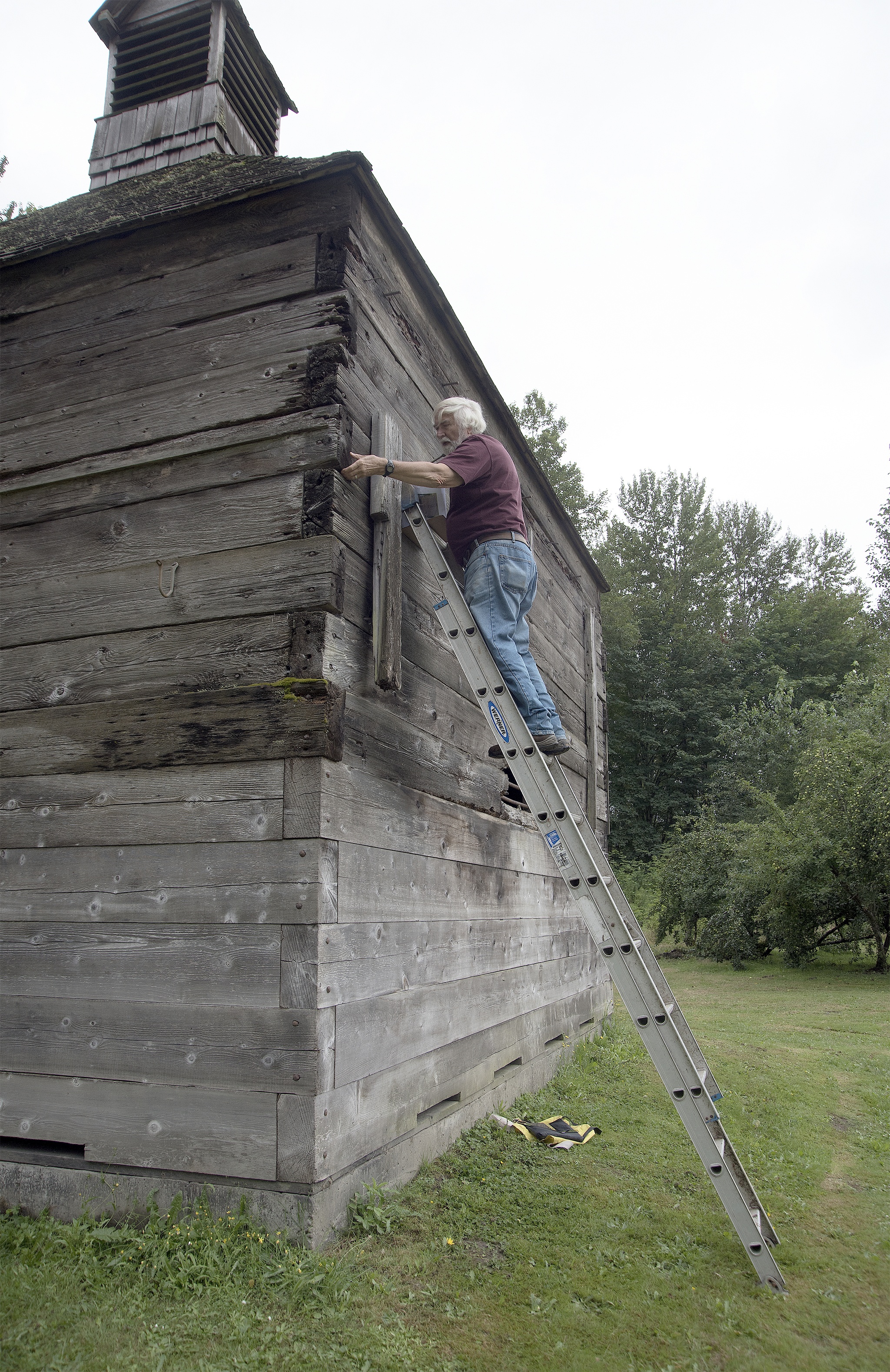Sometimes, it’s the smallest things that make history. In the 1880s, a tiny, hungry aphid in Europe devastated hop fields overseas, sending fame and, to a lesser extent, fortune to the Snoqualmie Valley area for the decade-long hop craze.
Hops are small, fragrant flower buds used in beer-making. They are one of only three ingredients allowed by the 500-year-old beer purity law governing the manufacture of beer in the Holy Roman Empire. The other two ingredients are barley and water.
If it weren’t for that little insect, locally called the hop louse, or its great love of eating those little flower vines, the hop industry might never have taken off in the Snoqualmie Valley.
Hops were grown in Washington since the early 1860s, explained Ruth Pickering of the Fall City Historical Society, but were not very profitable, until European hop crops failed. When the prices for hops rose from a few cents to more than $1 per pound in 1882, many farmers went into debt to buy land and hop roots to cash in. A group of Seattle investors bought more than 900 acres in the Valley to establish, on today’s Meadowbrook Farm, what has been called “the world’s largest hop ranch.” The U.S. Transcontinental Railroad, finished in 1869, also helped create the craze by providing improved access from farms to ports.
“We shipped hops to Europe because their crops were wiped out by the hop louse,” she said, standing outside the Fall City Hop Shed.
The shed, or kiln, is one of the last physical remnants of the hop-growing industry that flourished in the Valley from 1882 to 1892. The building, a small example of the kilns in use during the era, was one of the final stops for Washington hops, which were dried, or cured, for about a day in the kiln before being shipped overseas.
Pickering’s visit to the building, along the Snoqualmie River near the Fall City Park, coincided with architectural conservation consultant Harrison Goodall’s structural review of it in July.
Goodall completed a non-invasive survey of the building to gauge the progress of its decay; his work was funded by a Preservation Special Projects grant from King County 4Culture.
The shed was built upstream on the Snoqualmie by George Rutherford in the late 1800s and moved to its current location in 1904. Rutherford sold the building to Jack Bush at some point, and the Bush family lived in the windowless building for some time. It was restored by the Fall City Hop Shed Foundation in 1996, and King County Parks is the official property owner. Aside from that information, there’s little documented history on the shed. Even the building’s original height is unknown, since it’s been moved and various boards have been replaced over time.
Pointing at the beams of what may have been a loft in the past, Pickering said, “It’s so hard to know how things related to the hop shed originally.” Although the loft was used for drying hops, Pickering said they didn’t know how the hops got up to that spot.
Although the building’s past is unclear, Pickering is more concerned with the empty building’s future. That’s why she asked Goodall to complete his assessment.
“This is going to be a whole lot of information that can be part of a conversation about the future of the hop shed,” said Pickering.
At the shed, Goodall said he was seeing “a lot of rot.”
Insects and periodic flooding from the Snoqualmie have damaged many of the building’s planks, inside and out, and the building has a decided lean along one face — rain from the roof drips directly onto the wall in places.
“Overall, the Fall City Hop Shed is in fair to poor condition but needs immediate preservation attention to prevent or reduce further loss of historic fabric,” he wrote in his preliminary report. “The challenge in preservation is to retain historic integrity and character of a structure primarily through continuous care… and cautious replacement.”
“Is it saveable? Of course it is. How many hop houses are still around?”
Goodall also talked about cherishing the past, saying “Not only was this part of the hops craze, but also it’s part of two early Fall City pioneer families’ lives.”
The Historical Society hosts occasional tours of the hop shed. For information, visit http://www.fallcity.org/historical.html.
For more photos of the Fall City Hop Shed, visit https://flic.kr/s/aHskH6uiKV.
Hop trivia
• From Sept. 1 to Dec. 31, 1891, Washington shipped 34,0126 bales of hops. Snoqualmie was credited with 2,474 bales, and was surpassed only by Slaughter (in the Puyallup area) with 4, 041 bales and Kent with 2,524.
• A bale of hops weighed about 200 pounds; a well-tended yard could produce 1,000 to 2,000 pounds of hops per acre.
• A box held about 100 pounds of hops. For each box a picker filled, he or she earned a dollar.


